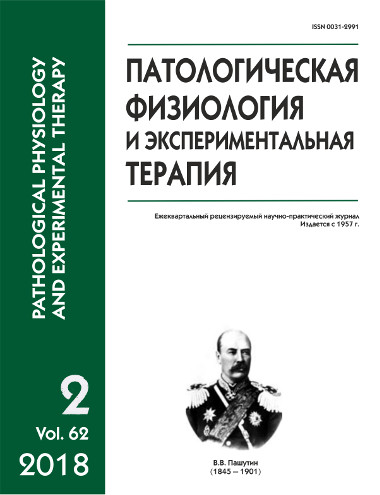Growth factors of the TGF-β family in blood of achondroplasia patients at stages of orthopedic treatment
Abstract
Summary. Elaboration of simple and effective ways for managing the distraction rate to provide an optimum regimen of limb lengthening for different groups of patients is an important task in implementation of transosseous osteosynthesis. The aim of this study was to analyze blood serum concentrations of TGFβ-1, TGFβ-2, BMP-4, and BMP-6 in individuals undergoing cosmetic height increase and patients with achondroplasia at different stages of distraction osteogenesis in tibial lengthening using the Ilizarov method. Methods. Concentrations of growth factors were measured using a set of Thermofisher (USA) equipment, including a Multiscan FC detector, iEMS Shaker, and automatic WellWash Washer and ELISA kits (eBioscience and RayBiotech Inc., USA). Results. Serum concentrations of TGFβ-2 and BMP-4 were lower and TGFβ-1 and BMP-6 were higher in achondroplasia patients than in individuals with cosmetic height increase even before any orthopedic treatment. Long bone lengthening for cosmetic height increase was associated with increases in serum levels of TGFβ-1 and TGFβ-2 at the start and in the middle of distraction. In achondroplasia patients, opposite changes were observed; serum concentrations of BMP-4 and BMP-3 increased 3.5 and 2 times, respectively, by the end of distraction and decreased during fixation. Conclusion. Therefore, we observed a disorder of the stage-by-stage bone remodeling process in achondroplasia patients.
Downloads
References
2. Shchukin A.A., Aranovich A.M., Popkov A.V., Popkov D.A. Evaluation of the results of lengthening of the lower limbs in patients with systemic skeletal diseases accompanied by pathologically low growth. Geniy ortopedii. 2014; 2: 44-51. (in Russian)
3. Stogov M.V., Luneva S.N., Tkachuk Y.A. Biochemical parameters in the prediction of the course of osteoreparative processes in skeletal injury. Klinichescheskaya Laboratornaya Diagnostika. 2010; (12): 5-7.
4. Popkov A.V. Intramedullary implants in the treatment of fractures of long tubular bones and their consequences. Deutschland: Palmarium Academic Publishing; 2016. (in Russian)
5. Reddi A.H. Role of morphogenetic proteins in skeletal tissue engineering and regeneration. Nat. Biotechnol. 1998; 16(3): 247-52.
6. Poplavets E.V., Nemtsov L.M. The significance of the transforming growth factor β in diseases of the gastrointestinal tract. Vestnik VGMU. 2010; 9(1): 56-63. (in Russian)
7. Novik A.A., Kamilov T.A., Tsygan V.N. Introduction to the molecular biology of carcinogenesis. Geotar - Med. 2004. (in Russian)
8. Parekh T.V. Gama P., Xie W. et al. Transforming growth factor – ß signaling is discabled early in human endometrial carcinogenesis concomitant with loss of growth inhibition. Cancer Res. 2002; 62: 27778 – 90.
9. Blobe G.C. et al. Role of transforming growth factor ß in human disease. N. Engl. J. Med. 2000; 342: 1350 – 8.
10. Klass B.R., Grobbelaar A.O., Rolfe K.J. Transforming growth factor β1 signalling, wound healing and repair: a multifunctional cytokine with clinical implications for wound repair, a delicate balance. Postgraduate Medical Journal. 2009; 85: 9 - 14.
11. Harradine K.A. Mutations of TGF-ß signaling molecules in human disease. Annals of medicine. 2006; 38(6): 403 - 14.
12. Gorkun A.A., Kozhina K.V., Zurina I.M., Kosheleva N.V., Saburina I.N. Pathophysiological and molecular mechanisms of extracellular matrix protein resorption during skin aging, and the ways to their restoration. Patologicheskaya Fiziologiya i Eksperimental`naya terapiya. 2016; 60 (4): 128—33. (in Russian)
13. Piek E., Heldin C.H., Ten Dijke P. Specificity, diversity, and regulation in TGF-ß superfamily signaling. Faseb. 1999; 13: 2105 - 24.
14. Rudoy A.S. TGF - beta - dependent pathogenesis of Marfan syndrome and related hereditary connective tissue disorders. Arterial'naya gipertenziya. 2009; 15(2): 223 – 6. (in Russian)
15. Sanchez-Capelo A. Dual role for TGF-beta1 in apoptosis. Cytokine Growth Factor Rev. 2005; 16(1): 15 - 34.
16. Hari Reddi A. Bone morphogenetic proteins (BMPs): From morphogens to metabologens. Cytokin Growth Factor Rev. 2009; 20 (5-6): 341 – 2.
17. Sturm A., Sturm A. et al. Transforming growth factor-beta and hepatocyte growth factor plasma levels in patients with inflammatory bowel disease. Eur. J.Gastroenterol. Hepatol. 2000; 12(4): 445 - 50.
18. Il'inich V.I. Physical culture of the student. Moscow; Gardariki, 2000. (in Russian)
19. Khomutov A. B. Anthropology. Rostov n/D: Feniks, 5 izd. 2004. (in Russian)
20. Mikhel' D.V. Social anthropology of medical systems: medical anthropology. Textbook for students. Saratov: Novyy proekt; 2010. (in Russian)
21. Ovcharenko V.A., Luk'yanova N.E. Anthropology. Tutorial. INFRA; 2010. (in Russian)
22. Kishkun A.A. Biological age and aging: the possibilities of determination and the path of correction: A guide for physicians. Moscow; GEOTAR-Media; 2008. (in Russian)
23. Laederich, M.B. and Horton, W.A. Achondroplasia: pathogenesis and implications for future treatment. Curr. Opin. Pediatr. 2010; 22: 516–23.
24. Garcia S., Dirat B., Tognacci T., Rochet N., Mouska X., Bonnafous S., et.al. Postnatal soluble FGFR3 therapy rescues achondroplasia symptoms and restores bone growth in mice. Sci. Transl. Med. 2013; 5, 203-5.
25. Wendt D.J., Dvorak-Ewell M., Bullens S., Lorget F., Bell S.M., et al. Neutral endopeptidase-resistant C-type natriuretic peptide variant represents a new therapeutic approach for treatment of fibroblast growth factor receptor 3-related dwarfism. J. Pharmacol. Exp. Ther. 2015; 353: 132–49.
26. Horton W.A. and Degnin, C.R. FGFs in endochondral skeletal development. Trends Endocrinol. Metab. 2009; 20: 341–8.
27. Hartmann J.T., Haap M., Kopp H.G., Lipp H.P. Tyrosine kinase inhibitors—a review on pharmacology, metabolism and side effects. Curr. Drug. Metab. 2009; 10: 470–81.
28. Cheng H., Jiang W., Phillips F., Haydon R., Peng Y., Zhou L. et al. Osteogenic activity of the fourteen types of human bone morphogenetic proteins (BMPs). J Bone Joint Surg Am. 2003; 85-A(8): 1544–52.
29. Klimov O.V. Calculation and control of the biomechanical axis of the lower limb in the frontal plane with its correction according to Ilizarov. Rossiyskiy zhurnal biomekhaniki. 2014; 18(2): 239 – 47. (in Russian)
30. Ibbotson K.J., Harrod J., Gowen M., D’Souza S., Smith D.D., Winkler M.E. et al. Human recombinant transforming growth factor alpha stimulates bone resorption and inhibits formation in vitro. Proc. Natl. Acad. Sci. 1986; 83 (7): 2228–32.






